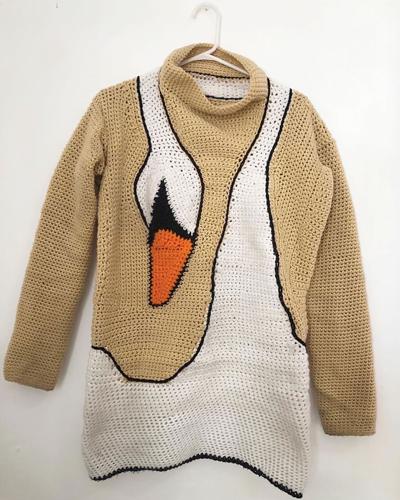
“Blue Fairy,” William Hunter
A trio of new exhibitions opened at The Packing Plant this month, each of them relating to time — either by recalling the past or by providing a glimpse of the future. Touring these gallery displays is like tracing a Western cultural timeline, and the artists represent different generations at different points in their creative careers.
William Hunter, Romantico
Independent curator Jay Sanchez has spent the past few years scheming and dreaming in the Wedgewood-Houston gallery scene. He has helped revive the city’s post-pandemic contemporary art community, and his behind-the-scenes moving and shaking has earned him the nickname “Ghost.” Sanchez and Lain York organized Barbarian Studios’ breakout exhibition at Zeitgeist in August, and Ghost curated TC and Ol Skool Mike’s show Back to the Southside (Pick Up the Pieces) at Coop in February. Now Sanchez has teamed up with Kathleen Boyle at her Red 225 space to reintroduce a Middle Tennessee artist whose work connects Pre-Raphaelite England and Andy Warhol’s New York.
Artist William Hunter was born in Lebanon, Tenn., but he spent 30 years in New York, where his work found its way into the collections of Barbra Streisand, Cher, Kurt Vonnegut, Woody Harrelson, Madonna, Andy Warhol and others. Hunter returned to Wilson County in 2001. The Romantico display at Red 225 references pop culture (“Heath”) and classical art (“Pagan David”), as well as the artist’s family story (“Castle Heights”). Hunter’s brushwork is impressionistic, but his subjects reference the symbolist painters who themselves borrowed from classical mythology. He mixes and matches art-historical styles, looking over his shoulder as the Pre-Raphaelites looked back to the Renaissance. The Pre-Raphaelites were also inspired by the natural subjects of Romantic poetry, and Hunter’s show is brimming with trees and animals, tangles of flowers and fields of grain.

“Swan Dress,” Mikki Yamashiro
Mikki Yamashiro, The Mall
The Mall exhibition at Coop fast-forwards from the late 19th century to the end times of maximalist American retail centers. Mall culture flourished into the 2000s before online shopping, big-box stores and social media mostly replaced America’s suburban town squares. Los Angeles-based artist Mikki Yamashiro’s display of crocheted fashions and accessories taps into the dystopian vibes of those perfect plastic places that promised everyone everything back in the day. She brings viewers a show about dying American dreams that sounds like Muzak and smells like Cinnabon. Yamashiro’s outfits hang on Coop’s walls like store displays. They feature cartoon characters like Bart Simpson, Garfield and Tweety Bird — Beavis and Butthead even make an appearance. The artist crafts shopping bags with satirical messages like “Forever 69” and “Thank you for stealing.” The show also includes a rendition of the once-reviled, now-iconic “swan dress” that Bjork wore to the Oscars in 2001, as well as a crocheted version of the pink suit and hat Jackie Kennedy wore in Dallas on Nov. 22, 1963.
Shahnaz Lighari, Inheritance
Contemporary gallery programming is brimming with messages and meanings, identities and activism. But those trends are reversing in favor of art that values form over content. We’re already seeing a new generation returning to art-about-art in the Duchampian found-object sculptures of Paul Kneale, the vibrant abstraction of Jadé Fadojutimi and the “Nonsensical Formalism” of Michael C. Thorpe. The future of painting is formalist, abstract and uniquely personal, and it looks more like early modernism than midcentury Ab-Ex.
Shahnaz Lighari’s Inheritance at Open Gallery is a window into this painterly tomorrow. Lighari is one to watch among Nashville’s emerging brush-slingers: She opened her first solo gallery exhibition, Transparency, at Random Sample back in February, and she teamed up with local poet Maggie Lee for the April publication of their Duomysticism book of verses and images. Lighari’s “Landscape 1” might have pulled its palette straight out of Kandinsky’s 1910 “Mountain Landscape With Church.” And the gooey, aggressive surface of “Grass” recalls the impasto applications of oil paints that Vincent van Gogh embraced in paintings like “Cypresses.” Lighari’s work is almost fully abstract, but her colors and forms lean into their natural inspirations just enough for viewers to make out a cloud here, a waterfall there. The works in the show are mostly small, and the exhibition reads like a meditative travel document or an Instagram photo dump after a long time away from home. It’s an exhibition that looks to the past to speak to the future, and it reminds viewers that sometimes the best artworks, like swaying trees and burbling streams, don’t “mean” or “say” anything. They simply are. And we take them on their own terms.



